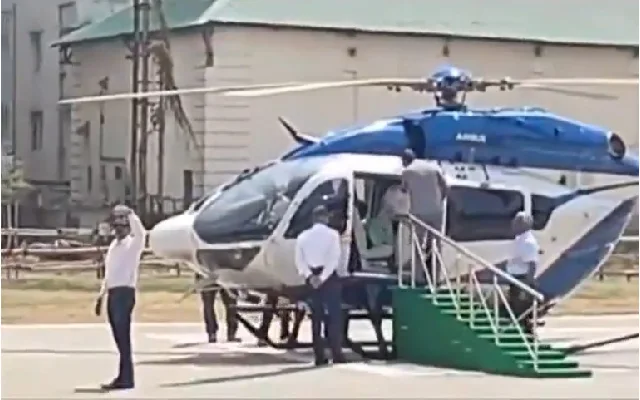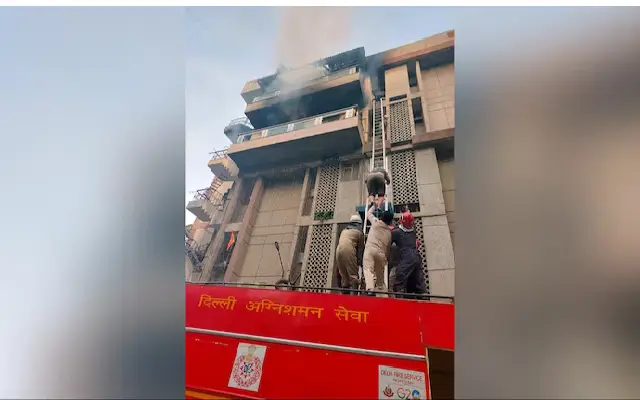 Inherent flaws in airport structure require extra skill and caution, leaving little margin for error, experts say. Now that the Adani Group has been awarded the Management Contract of the Airport – will things change ask Shailesh Shrivastava and Saurabh Sharma.
Inherent flaws in airport structure require extra skill and caution, leaving little margin for error, experts say. Now that the Adani Group has been awarded the Management Contract of the Airport – will things change ask Shailesh Shrivastava and Saurabh Sharma.
In the wake of the June 30th 2019 mishap on Mangalore airport, aviation experts say the very anatomy of the airport makes it susceptible to accidents. On June 30, an Air India flight carrying 189 people had gone off the tarmac after landing and ended up on grass. While there was no casualty, the incident was eerily similar to the May 2010 accident, which had killed 158 of the 166 people on board.
On May 22, Air India Express flight IX 812 on the Dubai-Mangalore route had burst into flames after overshooting the runway and falling off the cliff at its end. The official inquiry had held pilot error responsible for the accident. The aircraft that overshot the tarmac on June 30 was also an Air India Express flight IX 812 and flying the Dubai-Mangalore route. Both were Boeing 737-800s.
In a statement, Air India Express blamed wet runway, tailwind and inadequate braking for the June 30 incident. However, experts say more factors are involved. Mangalore airport has always drawn severe criticism from air safety experts because of its safety procedures, design and lack of preparedness to tackle disasters.
Extra caution needed
The court of inquiry constituted to probe the 2010 crash, in its report prepared by former India Air Force vice-chief of air staff Air Marshal BN Gokhale and a team of experts, had noted: “There are three table-top airports in India from where scheduled flights operate. There are Mangalore, Kozhikode and Lengpui. Because of the undulating terrain and constraints of space, these airfields require extra skill and caution while carrying out flight operations. The hazard of undershooting and overshooting, in particular, can lead to grave situations, as was the case in this accident. These tabletop runways also have problem of access roads around the airfield, which may need to be used in case of aircraft accidents. The narrow and winding roads can delay and hinder the rescue operations.”
On the difficulty of landing or taking off from table-top runways, former head of operations of Alliance Air and IndiGo Capt Shakti Lumba said, “There are two issues: runway environment and approach environment. For the first case, is the length of runway long enough for normal operations and is there enough overrun area in case of a misjudged landing/aborted take-off, as stipulated by the International Civil Aviation Organization (ICAO). If these two are met, then for take-off, tabletop runways pose no risk. However, for approach, pilots can be subjected to misleading illusions while landing with perceived height above ground, leading to misjudging the approach profile during visual landings.”
Until 2006, Mangalore airport was using only the 1,625-metre runway number 27/06, which restricted usability to smaller aircraft. Runway 24/06, created later, is 2,450 metre long.
“While the length of the runway 24/06 is adequate for operations by aircraft such as Airbus A320 and Boeing 737-800, the downward slope at end of runway 24 leading into hill slope is not recommended if one is to consider the hazards of overshooting the paved surface during take-off or landing,” stated the court of inquiry report on the crash, dates October 31, 2010.
The inquiry report recommended installing of Engineering Material Arresting System in the overshoot area of table-top airports. “In case it is not cost effective, then at least a Soft Ground Arrestor (SGA) should be available as part of RESA (Runway End Safety Area),” the report said.
“Considering the large momentum of these aircraft, a downward slope in the overrun area can worsen the outcome. It is therefore recommended that such downward slopes as in Mangaluru, be brought to the same level of the runway surface. This also needs to be ensured at all table-top airports in the country,” the report said.
In 2011, the Airports Authority of India raised the sloping terrain at the end of the runway to the same level as the runway. This was done at a cost of Rs3.5 crore. Markers have been placed on the runway to indicate remaining distance for landing and take-off.
Cover up allegations
Mohan Ranganathan, aviation safety consultant and an expert in wet runway operations, said the Airport Authority of India (AAI) has not carried out the ICAO-recommended corrections at Mangalore airport despite the 2010 accident. Responding to the aviation minister’s statement that the recent mishap is not a cause of concern, he said the incumbent is as clueless as Praful Patel, who held the post in 2010 and had declared that Mangalore runway conformed to ICAO Standards.
“In fact, there were huge violations by the AAI and a complete failure of the DGCA safety audit. All that was covered up by the COI report,” he said, adding. “The probe team had just one agenda: blame the pilot and cover up all the violations by the AAI, the airlines and the DGCA… The COI report was pure rubbish with a lot of cover ups.”
Further, he said one inherent risk with the Mangalore airport is overrun in the event of a long landing or a rejected take-off. He said the DGCA has never insisted on the remedial measures needed to minimise these risks and has been clearing the runways unrestricted, endangering lives.
















